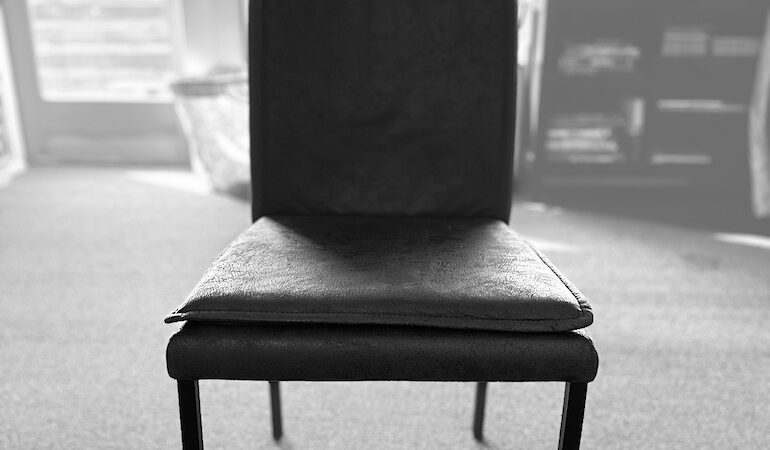When I started in my first Montessori school this year, my Guide Roshini asked me a question: Which chair would I like?
She thoughtfully offered me a thin, brown chair with a rectangular back and soft cushion, a wider chair with a squatter back, and a flowery armchair.
It seemed a minor detail to me – which chair I would sit in on the rare occasion when the preschool classroom allowed me a brief moment of rest. But I tested out the chairs anyway and chose the sleek, rectangular-backed one with the soft cushion.
The chair was placed in its spot on the back wall, where it has remained.
Learning the Value of a Cut Apple
In my first month of work, I rarely found my way back to that chair. As any adult who’s dealt with children can attest, they ask a lot of questions and request a lot of assistance. So I hurried around the room like I had in past classrooms, checking out what was going on, chatting with students, helping them solve problems.
However, I had so much to learn about my new role as an assistant in a Montessori Primary classroom. And those lessons have made me think about our role as parents outside the classroom, as well.
Maria Montessori said children are not just empty vessels waiting to be filled up with our knowledge. In the Casa Dei Bambini (Children’s House), children lead their own learning with the help of materials that spark their curiosity and the overview and instruction the classroom guide gives them.
From my chair at the back of the room, I see the children discover a new material, test it, get frustrated at times, but come back to it the next day to try again. I watch older children help their younger classmates navigate challenges. I’ve especially enjoyed observing children learn the art of apple cutting.
That first time a Primary child learns to cut an apple often begins with confusion: how to arrange the bowls, apple, apple cutter, cutting board, and sponge? Recalling how to place these materials in an order that makes sense can present that first satisfying victory. What do you cut? What do you cut it with? What do you cut it on? How do you clean up?
There’s an order to everything. Each lesson is presented first by the Guide and then children go about the practice of replicating that lesson. Through trial and error, they try out the steps they observed and make the motions and process their own.
Seeing a four-year-old contentedly savor the perfect apple slices they’ve cut fills me with such a warm affection for these children. They take their time and sit silently enjoying something they themselves created after they absorbed a process many people would falsely assume is too complicated for them.
Observation as Parenting
As parents, we often feel like we need to fill our children’s time with soccer practice, dance recitals, and after-school tutoring. All valid and enriching activities, for sure. But what needs to be sprinkled in are these moments when we can sit quietly, a warm mug of coffee in hand, and observe as our children explore the intricacies of the world around them.
They might pick up a broom and brush it across the floor, spreading more crumbs than they’re cleaning up. Or they might pull pots and pans out of the cabinet to noisily test how they fit together. They might focus on a bug crawling across the floor for what seems a crazy amount of time.
It’s important not to step in. Perfection is not the goal here, and a mess can generally be cleaned up. We are observers and documentarians, and our home base is our favorite comfy chair.
These moments offer small glimpses into our children’s inner thoughts and one-of-a-kind personalities. They tell us how they process situations, and how they handle frustration. They might even prompt us to buy more specific materials to foster an interest our child has expressed – like a butterfly habitat or ant farm.
The Perfect Chair
Could I go back a couple of months to when Roshini asked me which chair I wanted, I might be more stressed by the question. What’s the staying power of this particular chair? Will my back hurt? Will this be the most comfortable chair to get me through the year?
But it turns out, I accidentally chose the perfect chair for my new role as a quiet observer in a Children’s House. So far, I’m discovering a whole new world of excitement and discovery from my seat along the back wall.

Brenda has worked with children of all ages, beginning with the writing class she created for students ages 8-18. She has a degree in journalism from California State University, Northridge, and after discovering a love of teaching, she earned her early childhood education credits from the College of Marin. She spent six years in the Tiny Tots and Pre-K programs at the Hamilton Preschool run by the City of Novato and later subbed for the Novato Unified School District. In her free time, Brenda loves to spend time with her husband, two daughters, and 6-year-old granddaughter.






Jerry and Ruth Ann Thacker
We enjoyed Brenda Zahn’s insights into children and their creative learning processes. Her experience as a teacher and parent come together well as she works with children at the school.